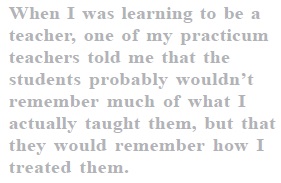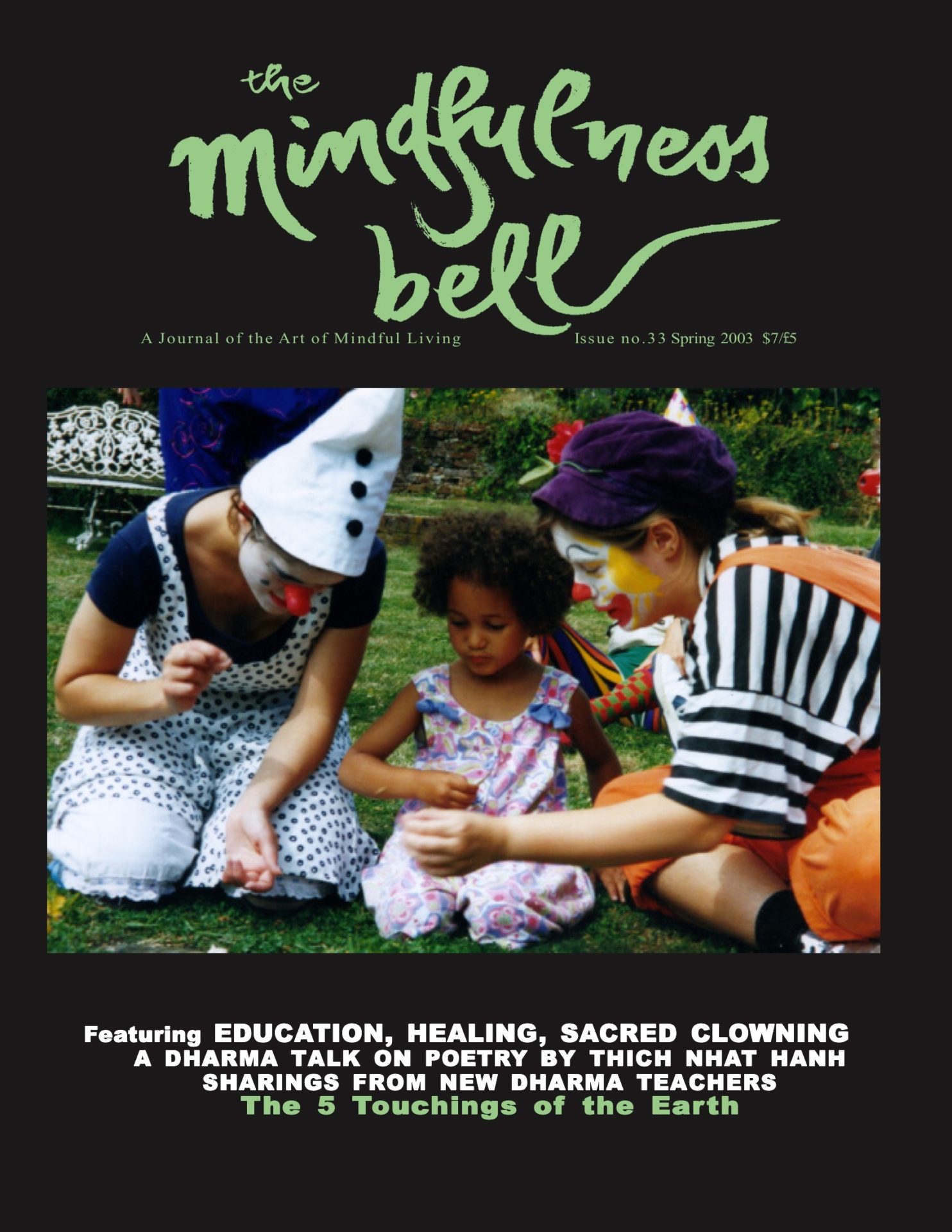By Clay McLeod
There is a movement in education today called “global education.” It originated in the peace education movement, but it has now grown to encompass teaching students about social justice, human rights, equality, and ecological sustainability, as well as peace and harmony between people. The idea of global interdependence is fundamental to the approach that global education takes in the classroom, and this idea mirrors the Buddhist teaching of interbeing.
By Clay McLeod
There is a movement in education today called “global education.” It originated in the peace education movement, but it has now grown to encompass teaching students about social justice, human rights, equality, and ecological sustainability, as well as peace and harmony between people. The idea of global interdependence is fundamental to the approach that global education takes in the classroom, and this idea mirrors the Buddhist teaching of interbeing. The similarities don’t stop there though. As an elementary school teacher who uses a global education approach, I have found that the similarities between global education and engaged Buddhism are striking, and I have adopted the practice of global education as part of my mindfulness practice.
Global education is an approach to teaching that stresses the interconnection of all things on this planet. According to the theory behind global education, we are all related to one another in a network of links, interactions, and connections that encircle the planet like a web. Global education stresses the importance of looking at the world and the relationships of people and things in the world as integrated systems that are dynamic and inseparable. It exposes the relationship between and unity of familiar dualisms like “local” vs. “global” and “past” vs. “future.” According to the theory of global education offered by Graham Pike and David Selby, building on the ideas of physicist David Bohm, everything causes everything else, and what happens anywhere affects what happens everywhere. The reality of global education exists on two levels, described by Bohm as the explicate and implicate orders. At the explicate level, objects seem to be separate from one another and discrete, but at the implicate level, looking deeply into the relationships between things, we see that the whole of reality is “enfolded” into every part of reality.
This precisely mirrors the Buddha’s teaching of interdependent co-arising and interbeing. This is, because that is; that is, because this is. All dharmas are conditioned and are really the continuation of other dharmas. This is the reality of impermanence and non-self. In Transformation at the Base: Fifty Verses on the Nature of Consciousness, Thay also discusses David Bohm’s explicate and implicate orders, and he compares these “orders” to the Buddhist teaching about the historical dimension or relative reality (samsara) and the ultimate dimension or absolute reality (nirvana). Global education touches this insight and attempts to open students’ eyes to it.

Global education also touches the insight of the four noble truths. Through the lens of global education, students are encouraged to look at the world clearly and see the reality of suffering, like the unequal distribution of wealth, the existence of sweat shops where workers are abused and exploited, the devastation of war, and the consequences of racism, sexism, and discrimination. More importantly, it is an approach that encourages students to do something about the suffering that they see in the world. Global education tries to encourage social responsibility by teaching students how to shape the future through their actions in the present moment.
This penetrates the third noble truth; there can be a cessation of creating suffering. The idea of effective action that reduces injustice, oppression, and suffering is central to global education. Students are encouraged to realize that their choices have consequences and that they can change the world with their actions. This parallels the practice of engaged Buddhism. When a bodhisattva sees suffering, she is moved by compassion to act in order to reduce that suffering. This is the aspiration of global education; to create a culture of bodhisattvas who see the relationship between their well-being as individuals and their character and actions as these things relate to the well-being of the planet. Through the development of students’ character, knowledge, skills, and abilities, it aspires to transform the things in the world that lead to suffering.
In my classroom, I have a poster that represents the four immeasurable minds. It’s title is “Friendship Tips,” and it says “Be friendly and kind to everyone that you meet (loving kindness); be happy and joyful (sympathetic joy); be caring, and think about other people’s feelings (compassion); try to stay calm, even when things aren’t going your way (equanimity).” These are the values that I try to personify and teach in my classroom. When I was learning to be a teacher, one of my practicum teachers told me that the students probably wouldn’t remember much of what I actually taught them, but that they would remember how I treated them. In my interactions with my students, I try to offer them a kind and loving example of how to treat others. Global education is an approach that allows me to try to explicitly teach them the knowledge and skills that they need to live these values. Through global education, I try to make what I teach them match the example that I attempt to provide through my actions.
Every year, I begin the year by teaching my students how to be good friends and how to respond to bullies. My hope is to create a safe and supportive classroom environment where students can grow in confidence and feel that they belong. One of my central classroom expectations is that students solve their problems peacefully. Through brainstorming, role playing, reading, writing, and drawing, we explore ways to be kind and friendly and ways to respond to violence with communication rather than an escalating cycle of violence. The students practice their basic reading and writing skills, developing literacy and the ability to communicate effectively, while also developing their ability to get along with others, perform as cooperative members of a group and a community, and solve problems in peaceful, constructive ways.
Throughout the year, we study various topics and themes that address the goals and aspirations of global education. While we address the learning outcomes required by the curriculum, we create a classroom community of caring and support, and we learn about peace building, deep listening, loving speech, equality between people, the relationship of people and animals to their environments, the interactions and interdependence of elements in the ecosystem, and ways to stay calm and resolve the conflicts that we have with each other through discussion rather than violence. Through global education, I try to cultivate and nourish the seeds of love, compassion, joy, understanding, and peace in my students and myself. To me, the practice of global education is an essential part of my mindfulness practice.
Clay McLeod practices with a Sangha in Chilliwack, B.C., Canada, where he teaches grades three and four. He and his wife Meaghan look forward to watering seeds of joy and happiness in their own family “classroom” when their first child arrives in July.

